Application registration permissions for custom roles in Microsoft Entra ID
This article outlines the app registration permissions available for custom role definitions in Microsoft Entra ID. These permissions allow administrators to manage application registrations with specific access levels, ensuring secure and efficient management of applications within the organization.
License requirements
Using this feature requires Microsoft Entra ID P1 licenses. To find the right license for your requirements, see Compare generally available features of Microsoft Entra ID.
Permissions for managing single-tenant applications
When choosing the permissions for your custom role, you can grant access to manage only single-tenant applications. Single-tenant applications are available only to users in the Microsoft Entra organization where the application is registered.
Single-tenant applications are defined as having Supported account types set to "Accounts in this organizational directory only." In the Graph API, single-tenant applications have the signInAudience property set to "AzureADMyOrg."
To grant access to manage only single-tenant applications, use the permissions indicated as follows with the subtype applications.myOrganization. For example, microsoft.directory/applications.myOrganization/basic/update.
See the custom roles overview for an explanation of the terms subtype, permission, and property set. The following information is specific to application registrations.
Create and delete
There are two permissions available for granting the ability to create application registrations, each with different behavior:
microsoft.directory/applications/createAsOwner
Assigning this permission results in the creator being added as the first owner of the created app registration. The created app registration counts towards the creator's 250 created objects quota.
microsoft.directory/applications/create
Granting this permission prevents the creator from being added as the first owner of the app registration and excludes the app registration from the creator's 250-object quota. Use this permission carefully as there's nothing preventing the assignee from creating app registrations until the directory-level quota is reached.
If both permissions are assigned, the /create permission takes precedence. Though the /createAsOwner permission doesn't automatically add the creator as the first owner, owners can be specified during the creation of the app registration when using Graph APIs or PowerShell cmdlets.
Create permissions grant access to the New registration command.
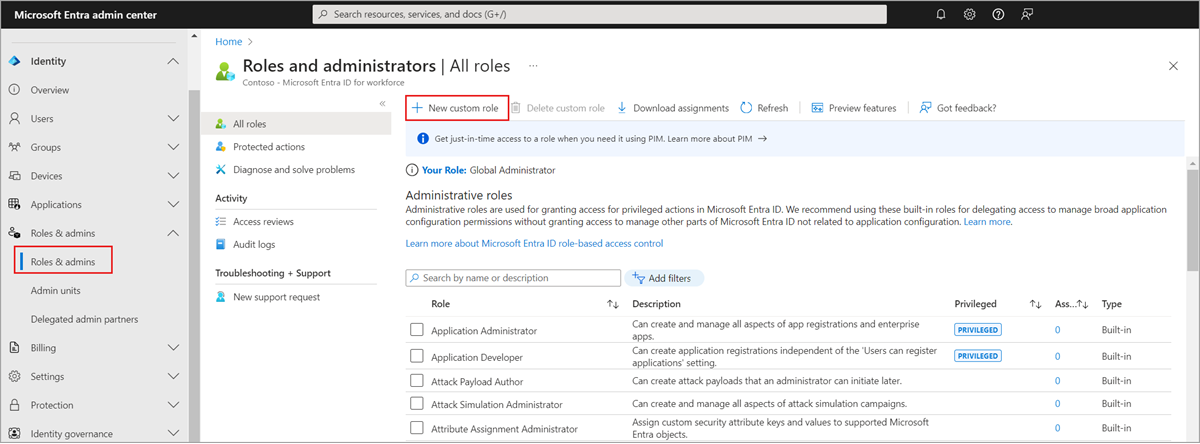
There are two permissions available for granting the ability to delete app registrations:
microsoft.directory/applications/delete
Grants the ability to delete app registrations regardless of subtype including both single-tenant and multitenant applications.
microsoft.directory/applications.myOrganization/delete
Grants the ability to delete app registrations restricted to those that are accessible only to accounts in your organization or single-tenant applications (myOrganization subtype).
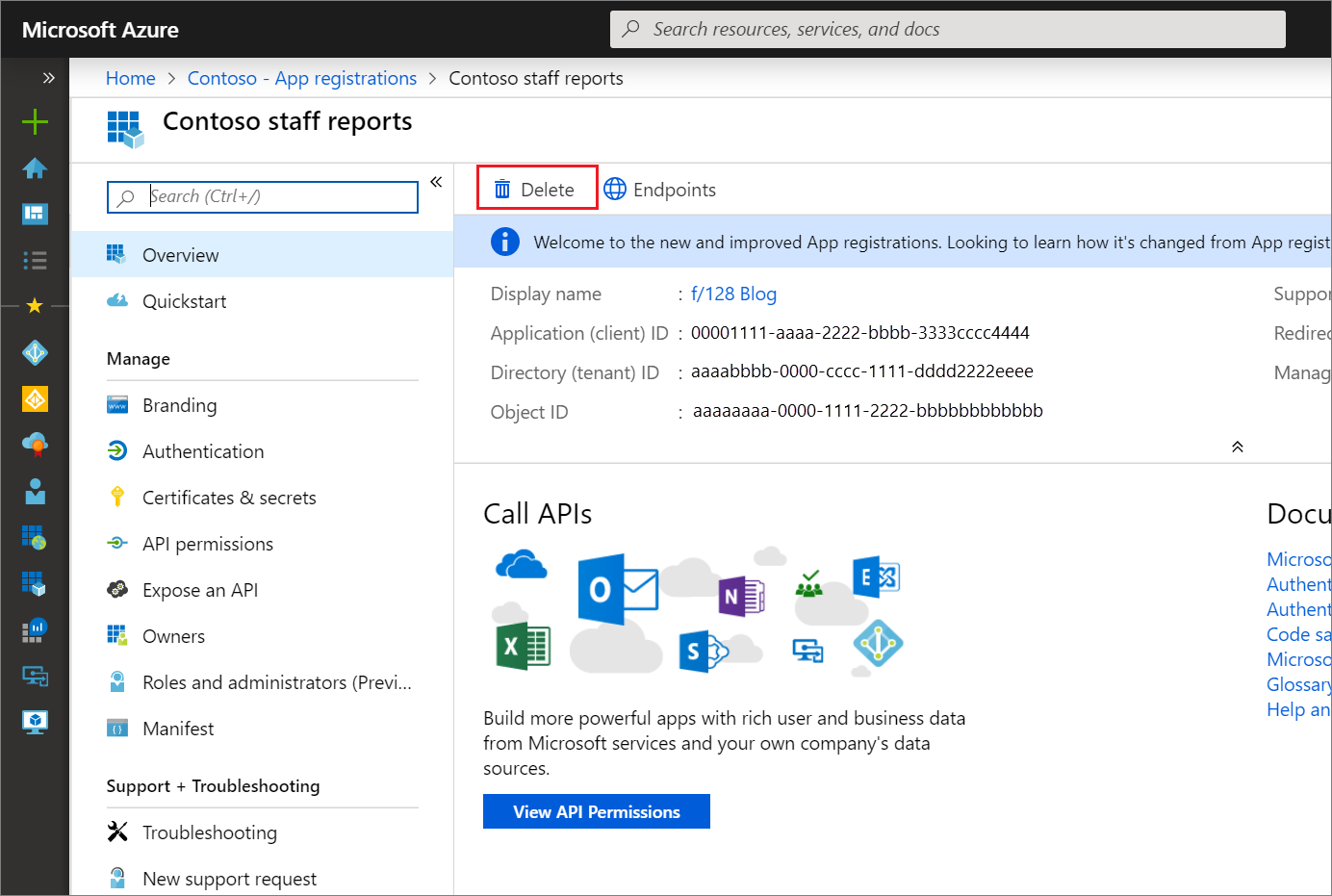
Note
When assigning a role that contains create permissions, the role assignment must be made at the directory scope. A create permission assigned at a resource scope doesn't grant the ability to create app registrations.
Read
All member users in the organization can read app registration information by default. However, guest users and application service principals can't. If you plan to assign a role to a guest user or application, you must include the appropriate read permissions.
microsoft.directory/applications/allProperties/read
Grants the ability to read all properties of single-tenant and multitenant applications outside of properties that can't be read in any situation like credentials.
microsoft.directory/applications.myOrganization/allProperties/read
Grants the same permissions as microsoft.directory/applications/allProperties/read, but only for single-tenant applications.
microsoft.directory/applications/owners/read
Grants the ability to read owners property on single-tenant and multitenant applications. Grants access to all fields on the application registration owners page:
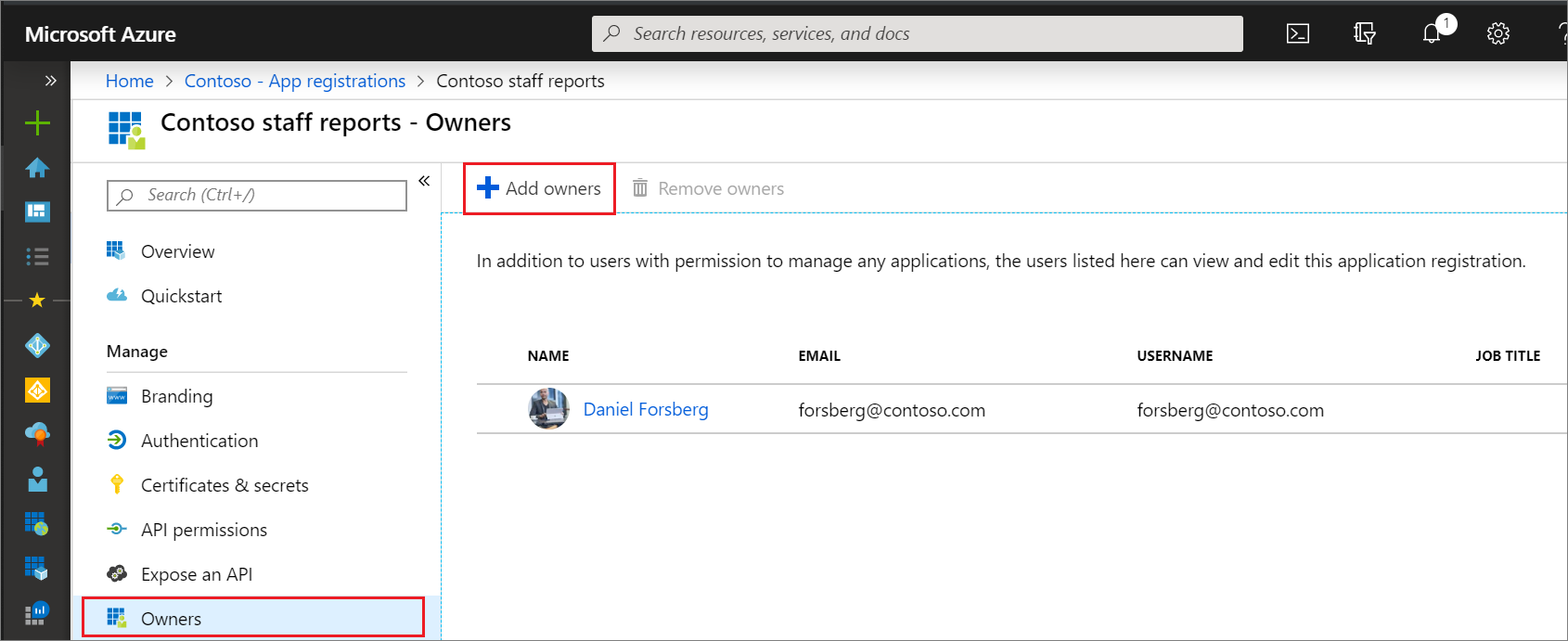
microsoft.directory/applications/standard/read
Grants access to read standard application registration properties. This includes properties across application registration pages.
microsoft.directory/applications.myOrganization/standard/read
Grants the same permissions as microsoft.directory/applications/standard/read, but for only single-tenant applications.
Update
The "Update" permissions in Microsoft Entra ID allow administrators to modify various properties of application registrations. These permissions are essential for maintaining and managing both single-tenant and multitenant applications. Depending on the specific permission granted, administrators can update properties such as supported account types, authentication settings, branding details, and more. The following is a detailed list of the available update permissions and their specific capabilities.
microsoft.directory/applications/allProperties/update
Allows the ability to update all properties on single-tenant and multitenant applications.
microsoft.directory/applications.myOrganization/allProperties/update
Grants the same permissions as microsoft.directory/applications/allProperties/update, but only for single-tenant applications.
microsoft.directory/applications/audience/update
Allows the ability to update the supported account type (signInAudience) property on single-tenant and multitenant applications.
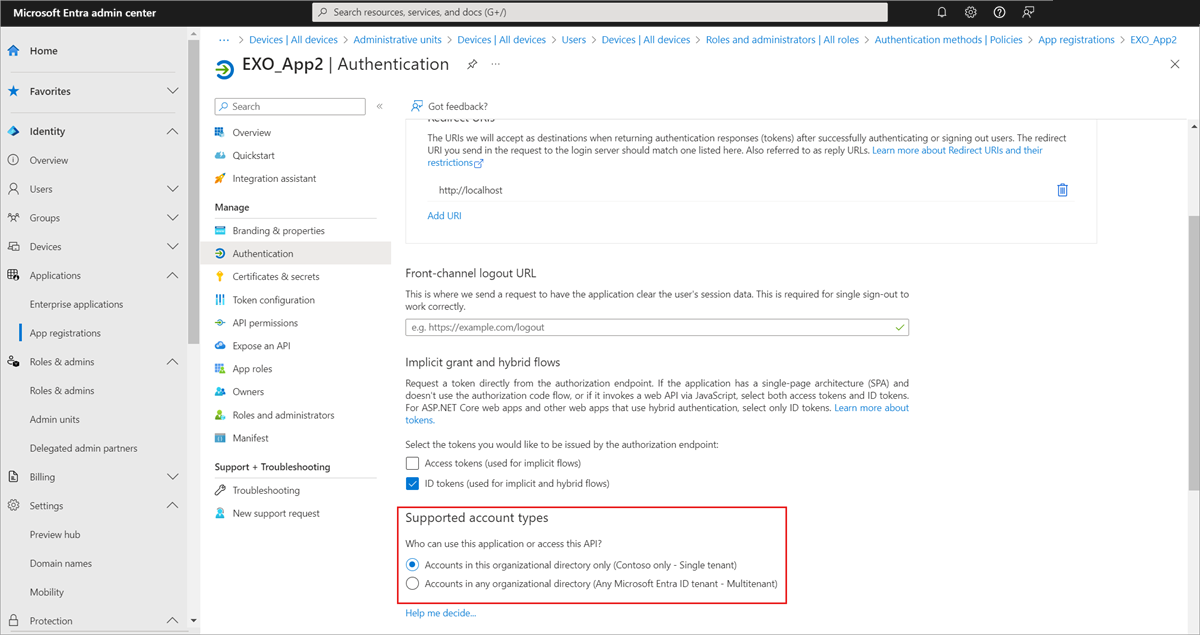
microsoft.directory/applications.myOrganization/audience/update
Grants the same permissions as microsoft.directory/applications/audience/update, but only for single-tenant applications.
microsoft.directory/applications/authentication/update
Allows the ability to update the reply URL, sign-out URL, implicit flow, and publisher domain properties on single-tenant and multitenant applications. Grants access to all fields on the application registration authentication page except supported account types:

microsoft.directory/applications.myOrganization/authentication/update
Grants the same permissions as microsoft.directory/applications/authentication/update, but only for single-tenant applications.
microsoft.directory/applications/basic/update
Allows the ability to update the name, logo, homepage URL, terms of service URL, and privacy statement URL properties on single-tenant and multitenant applications. Grants access to all fields on the application registration branding page:
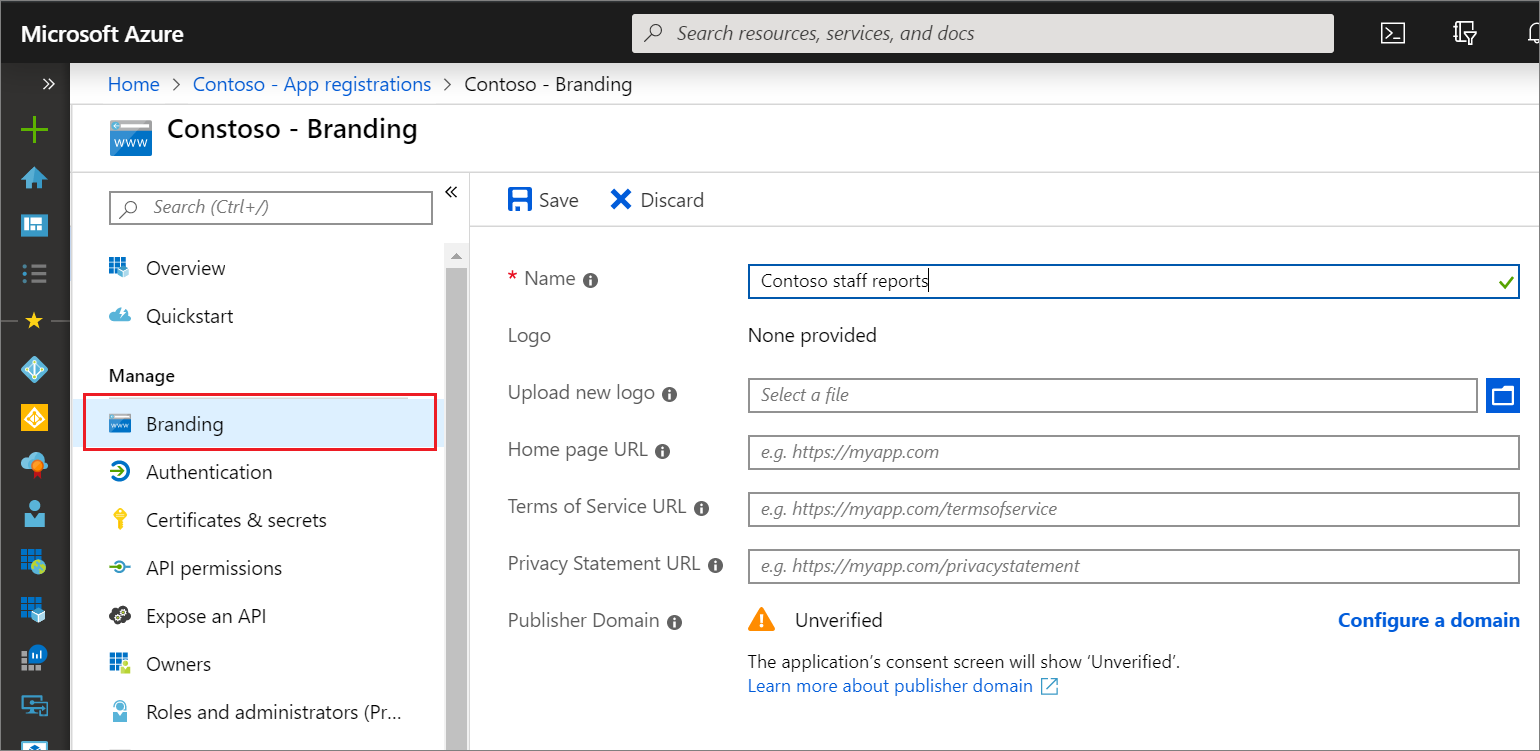
microsoft.directory/applications.myOrganization/basic/update
Grants the same permissions as microsoft.directory/applications/basic/update, but only for single-tenant applications.
microsoft.directory/applications/credentials/update
Allows the ability to update the certificates and client secrets properties on single-tenant and multitenant applications. Grants access to all fields on the application registration certificates & secrets page:
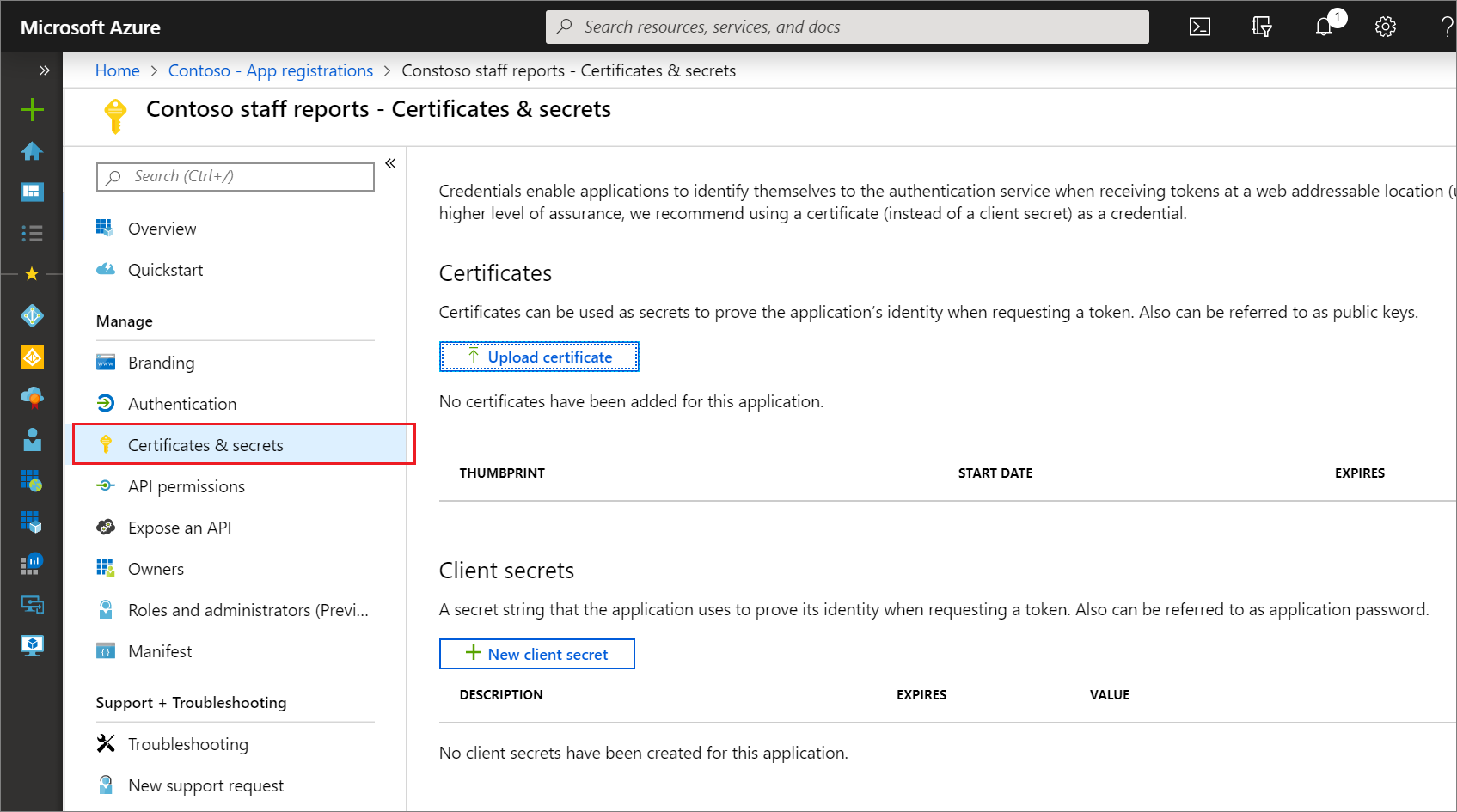
microsoft.directory/applications.myOrganization/credentials/update
Grants the same permissions as microsoft.directory/applications/credentials/update, but only for single-tenant applications.
microsoft.directory/applications/owners/update
Allows the ability to update the owner property on single-tenant and multitenant. Grants access to all fields on the application registration owners page:

microsoft.directory/applications.myOrganization/owners/update
Grants the same permissions as microsoft.directory/applications/owners/update, but only for single-tenant applications.
microsoft.directory/applications/permissions/update
This permission allows updates to various properties on single-tenant and multitenant applications, including delegated permissions, application permissions, authorized client applications, required permissions, and consent properties. It doesn't grant the ability to perform consent. Grants access to all fields on the application registration API permissions and Expose an API pages:
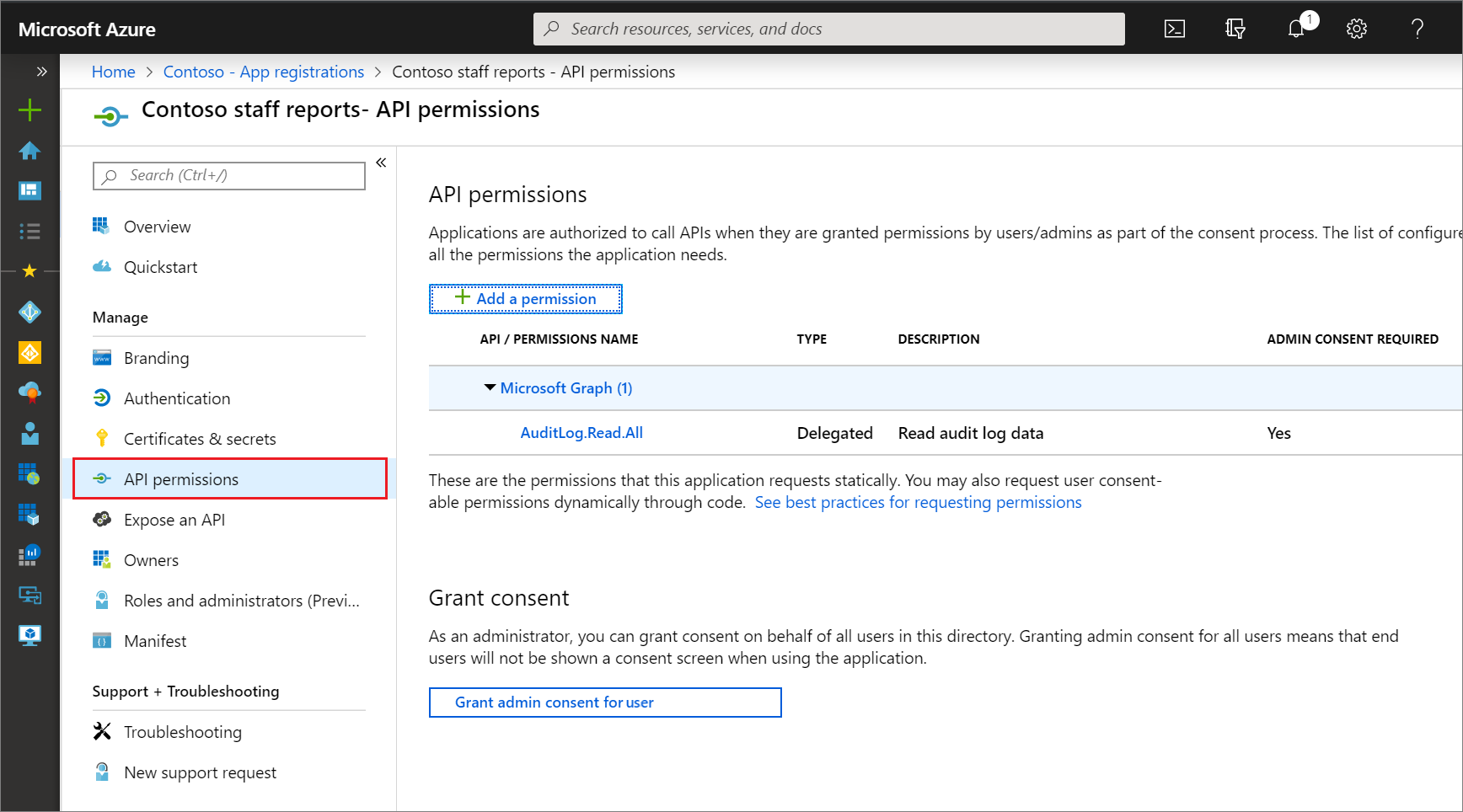
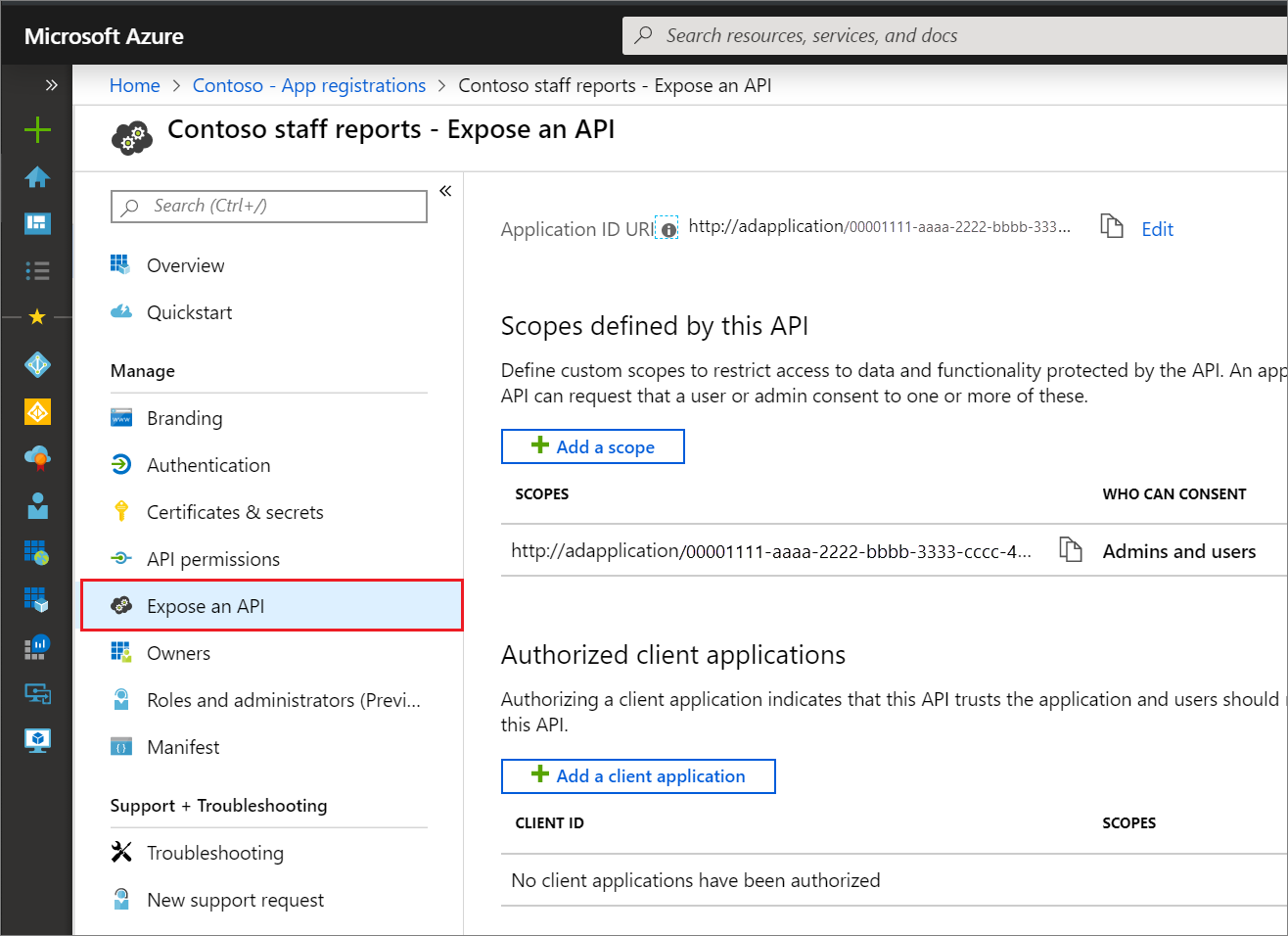
microsoft.directory/applications.myOrganization/permissions/update
Grants the same permissions as microsoft.directory/applications/permissions/update, but only for single-tenant applications.